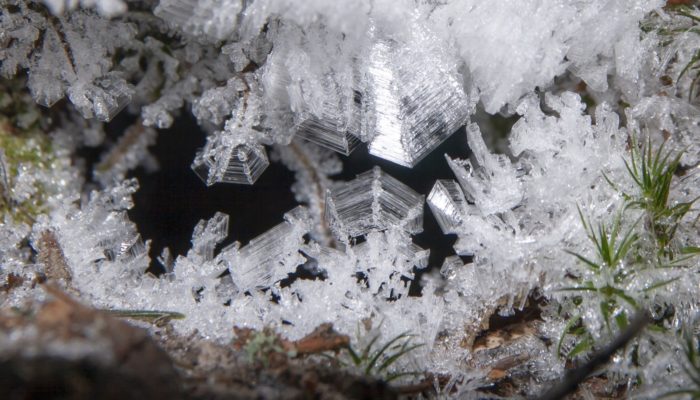The utility of logarithmic scales is nothing new to scientists – yet, sound interpretation of pH changes when comparing settings with different initial pH can be challenging. This blogpost highlights a manuscript by Fassbender et al. [1] that was recently submitted to the journal BG and is currently under open peer review. The pH scale was first published by Søren Peter Lauritz Sørensen in 1909 [2 ...[Read More]
GeoLog
Imaggeo On Monday: Konsfjorden and Kronebreen glacier
Taken shortly after our departure from Ny-Ålesund after our first “Lost Meteorites” field trial in Greenland testing new equipment that can be used to discover ‘missing’ iron meteorites in Antarctica, the return flight gave incredible views of the surrounding landscape. This photo was taken looking down to the icy waters of Kongsfjorden on the west coast of Svalbard and the ...[Read More]
Tectonics and Structural Geology
TS Must-Read – Sibson (1977) Fault Rocks and Fault Mechanism
The paper “Fault Rocks and Fault Mechanisms” by R. H. Sibson (1977), was one of the first studies that established major connections between the rocks that form in faults, and their conditions and mechanics during formation at crustal scale. Concretely, Sibson (1977) established: 1.) links among the textures and lithologies that develop along fault zones (fault rocks), 2.) the rheological and crus ...[Read More]
Ocean Sciences
Happy Holidays
We would like to end this year by looking back and thanking you! In July we finally launched the Ocean Sciences blog and joined the EGU blogsphere. Since then we had nine blog posts. Thank you to all the great guest authors we had this year. After the initial Ocean Sciences blog team of Gwyn and me, we are happy to double our efforts with Elizabeth and Kristin joining the editorial team. Elizabeth ...[Read More]
Nonlinear Processes in Geosciences
NPG Paper of the Month: “Statistical postprocessing of ensemble forecasts for severe weather at Deutscher Wetterdienst”
The October 2020 NPG Paper of the Month award goes to Reinhold Hess for the paper “Statistical postprocessing of ensemble forecasts for severe weather at Deutscher Wetterdienst“. Ensemble Forecasting rose with the understanding of the limited predictability of weather. In a perfect ensemble system, the obtained ensemble of forecasts expresses the distribution of possible weather scena ...[Read More]
Geodynamics
Bring on 2021!
Good news, everyone: 2020 is almost over! Your beloved EGU Geodynamics blog team is taking a 2-week break to recover from this extraordinary year. Or maybe ‘unprecedented’ is a better word? I am – of course – referring to the fact that 2020 has been the most successful blog year to date. Not at all the fact that there was a global pandemic this year. Nope. Absolutely not. T ...[Read More]
Seismology
Git or Perish: First commit
Maria, a member of our ECS team, recently interviewed Dr Eric Daub from The Alan Turing Institute, London, UK. Here the Seismology ECS Team wants to know how we can do code better. Together. This is the first interview with software engineers explaining the importance of good practices in software development. Dr Eric Daub received his PhD from the University of California, Santa Barbara, in compu ...[Read More]
GeoLog
Imaggeo On Monday: Nature of ice crystals
Moisture coming from the ground is freezing at the entrances of small ground pockets, shaping wonderful natural ice crystals, during a very cold and dry winter in Poland in 2019. Description by Katarzyna Walczak, after the description on imaggeo.egu.eu. Imaggeo is the EGU’s online open access geosciences image repository. All geoscientists (and others) can submit their photographs and video ...[Read More]
Natural Hazards
Climate Change: is Viticulture under threat?
In the afternoon of August 29, 2020, an intense supercell, which is a thunderstorm characterized by the presence of a deep, persistently rotating updraft, affected the province of Verona in the north of Italy (Figure 1). It was not the first event of this kind; several other events, including tornado episodes, had already occurred during summer 2020. Here the video of the downburst recorded during ...[Read More]
Climate: Past, Present & Future
Presenting the EGU climate divisions´ outreach team
For our seasonal greetings this year, we would like to present the outreach team of the climate division. Our team has grown after the last EGU assembly, and this was highly visible in our increased number of blog postings throughout the year. We published 14 post in total! The team is responsible for writing and editing blog posts as well as finding motivated guest writers. We try to address all ...[Read More]










